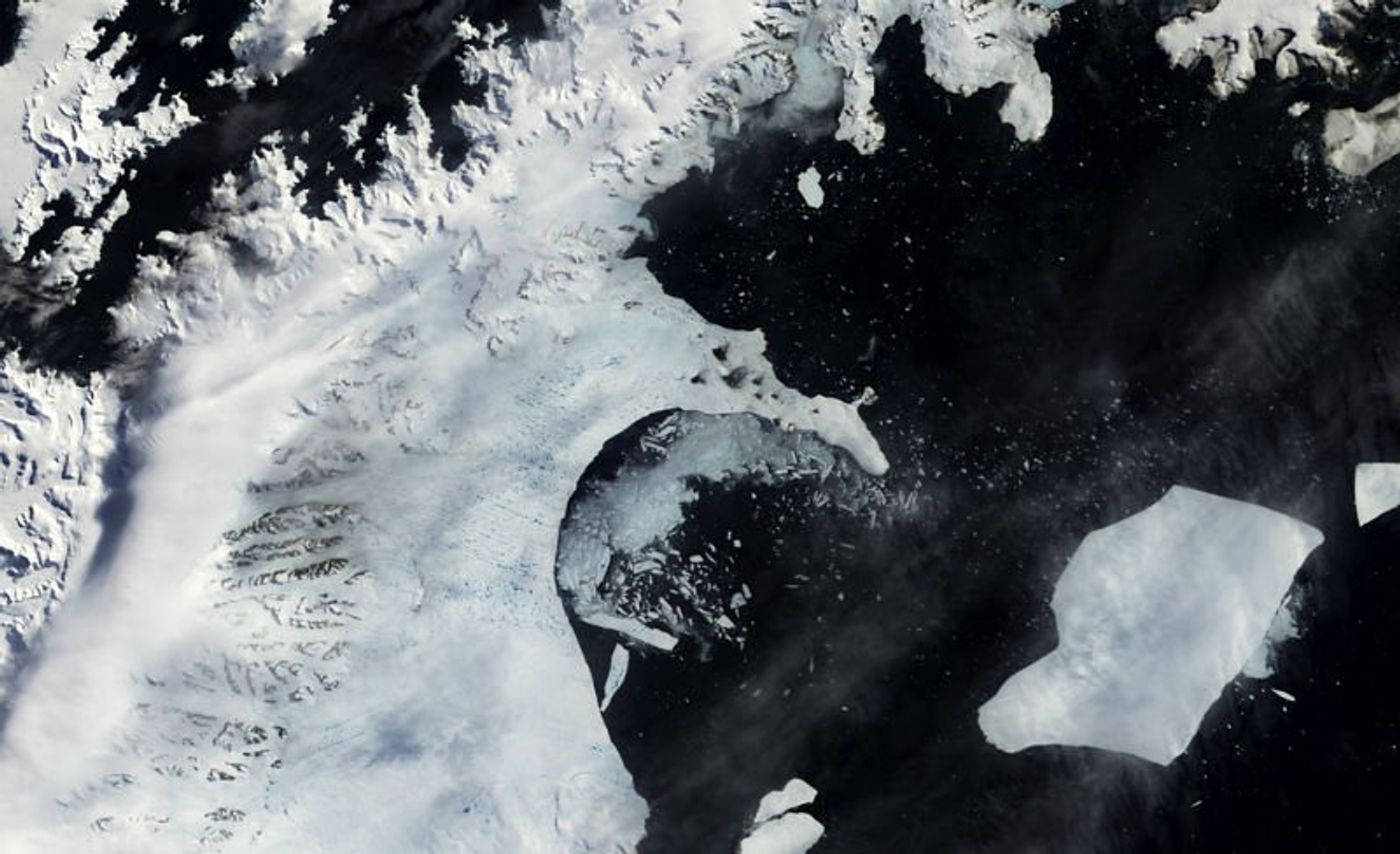Larsen C is one of the world’s largest ice shelves. The most northern major ice shelf of the Antarctic peninsula, Larsen C is the fourth largest Antarctic ice shelf overall. The Larsen ice shelf is split up into three smaller ice shelves - Larsen A, B, and C. Larsen A and B have already experienced massive declines over the past two decades, and now a study from researchers from Project MIDAS, a British Antarctic Survey that involves teams from several UK universities, report that approximately 12% of the entire Larsen C ice shelf is expected to break off, leaving the exposed ice front at its most retreated position ever.
Larsen C, according to the British Antarctic Survey, is “slightly smaller than Scotland.” It’s called an ice “shelf” because the entirety of this country-sized area is covered by 350-meter-thick ice that is floating on top of deep ocean waters.
The crack in Larsen C grew around 30 kilometers (18.6 miles) in length between 2011 and 2015. And as it grew, also became wider — by 2015, yawning some 200 meters in length. The scientists, who are part of Project MIDAS, found that the large crack had grown another 13.67 miles (22 kilometers) since it was observed in March, and has widened to about 350 meters. The full length of the crack is now 80 miles (130 kilometers), researchers say.
The scientists say the crack may carve out an iceberg the size of the state of Delaware. Glaciologist Martin O'Leary, one of the study researchers, calculated that the amount of ice lost would be about 6,000 square kilometers (2,316 square miles). O'Leary says it is hard to predict when it will happen the calving will happen. "It's a lot like predicting an earthquake," says O'Leary. "Exact timings are hard to come by."
This ice loss will represent the largest calving event in the Antarctic peninsula since the turn of the century. It will also be the third biggest collapse ever recorded, as well as the largest from the Larsen C ice shelf. When the huge ice shelf does calve, the activity could indirectly raise sea levels by causing the seaward flow of the non-floating ice behind it to go more quickly.
Sources:
The Washington Post,
Project MIDAS,
Tech Times,
Nature World News,
Science Alert









